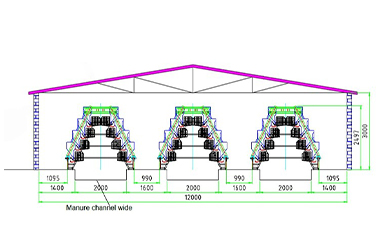Optimizing Pellet Feed Machinery for Enhanced Efficiency and Productivity in Animal Nutrition
តុលា . 18, 2024 09:02 Back to list
Optimizing Pellet Feed Machinery for Enhanced Efficiency and Productivity in Animal Nutrition
Pellet Feed Machines A Vital Component for Modern Animal Nutrition
In the evolving landscape of animal husbandry, pellet feed machines have become increasingly essential for optimizing nutrition and improving the health of livestock. These machines play a crucial role in the production of high-quality pellet feed, which is essential for meeting the dietary needs of various animals, including poultry, cattle, and aquaculture species.
Pellet feed is created by compressing and molding feed ingredients into a dense, stable form. This process enhances the nutritional value of the feed and makes it more palatable for animals. One of the significant advantages of using a pellet feed machine is the ability to efficiently utilize raw materials. Ingredients such as grains, protein meals, vitamins, and minerals can be precisely mixed and pelleted, ensuring that animals receive a balanced diet that supports their growth, reproduction, and overall well-being.
The operation of a pellet feed machine involves several key steps. First, raw materials are ground into finer particles to improve the consistency of the feed. Next, these ground ingredients are mixed with steam or water to condition them, which helps to bind the particles together during the pelleting process. The mixture is then forced through a die under high pressure and temperature, which not only shapes the feed into pellets but also kills harmful pathogens and enhances digestibility. Finally, the pellets are cooled and dried to achieve the desired moisture content before packaging or further processing.
pellet feed machine

Modern pellet feed machines are designed with advanced technology, enabling increased efficiency and output. Features such as automatic feeding systems, precise monitoring of temperature and moisture levels, and energy-efficient operations contribute to higher productivity. Additionally, these machines can be customized to produce pellets of various sizes and densities, catering to the specific needs of different animals.
Moreover, the use of pellet feed not only simplifies feeding practices but also minimizes waste. Animals tend to waste less feed when it is presented in a compact pellet form, reducing the overall feed costs for farmers and enhancing feed conversion rates.
In conclusion, pellet feed machines are indispensable in the realm of animal nutrition. They streamline the production of nutritious, easily consumable feed, ensuring that livestock are healthy and productive. As the demand for high-quality animal products continues to rise, the importance of efficient and reliable pellet feed machines will only increase, paving the way for advancements in agricultural practices and animal husbandry.
-
Automatic Feeding Line System-Poultry Farming|Chicken Feeding&Watering
NewsJul.30,2025
-
Automatic Feeding Line System - Anping County Yize Metal Products Co., Ltd.|Pan Feeder Nipple Drinker,Broiler Farming
NewsJul.30,2025
-
Automatic Feeding Line System Pan Feeder Nipple Drinker-Anping County Yize Metal Products Co., Ltd.
NewsJul.30,2025
-
Automatic Feeding Line System-Anping County Yize Metal Products Co., Ltd.|Durable Construction&Easy Maintenance
NewsJul.30,2025
-
Automatic Feeding Line System-Anping County Yize Metal Products Co., Ltd.|Pan Feeder Nipple Drinker&Durable Poultry Farming Solution
NewsJul.30,2025
-
Automatic Feeding Line System Pan Feeder Nipple Drinker|Anping County Yize Metal Products Co., Ltd.
NewsJul.29,2025






